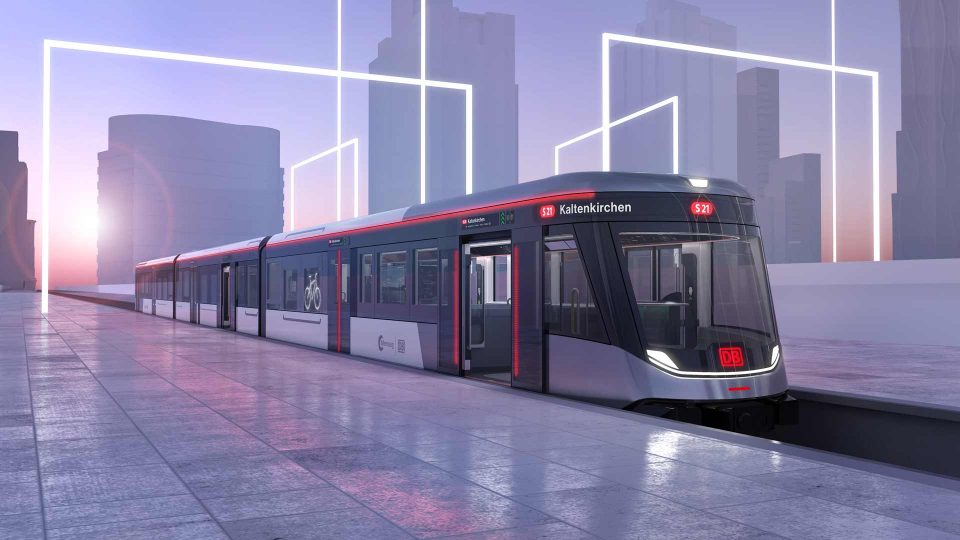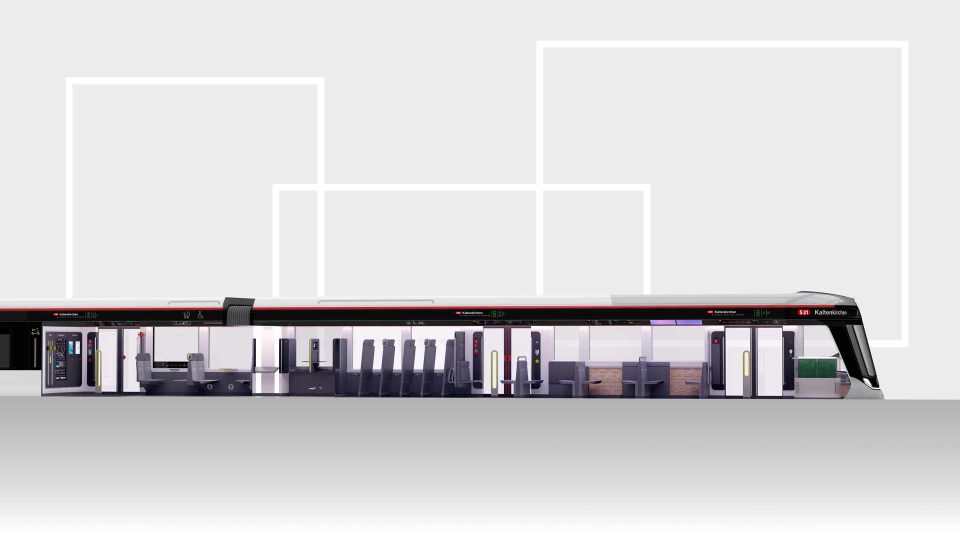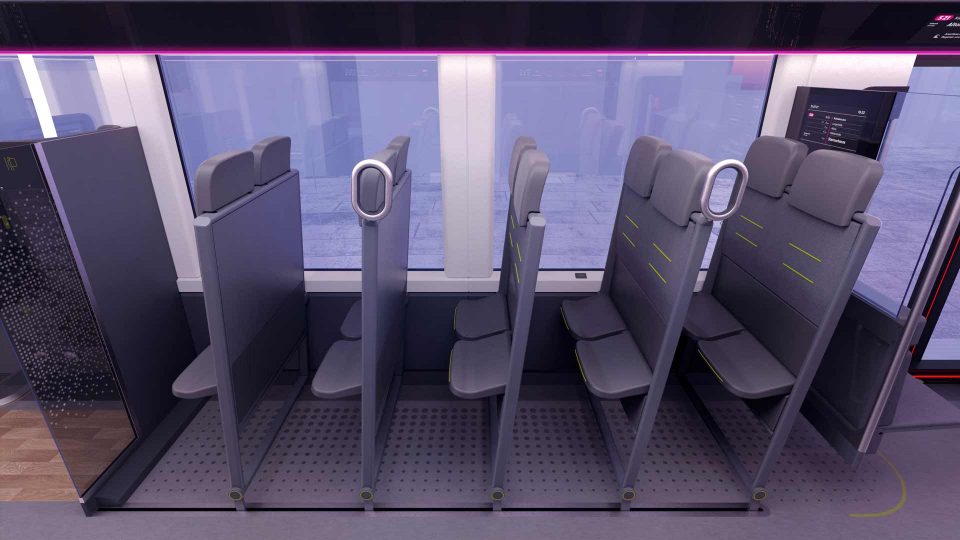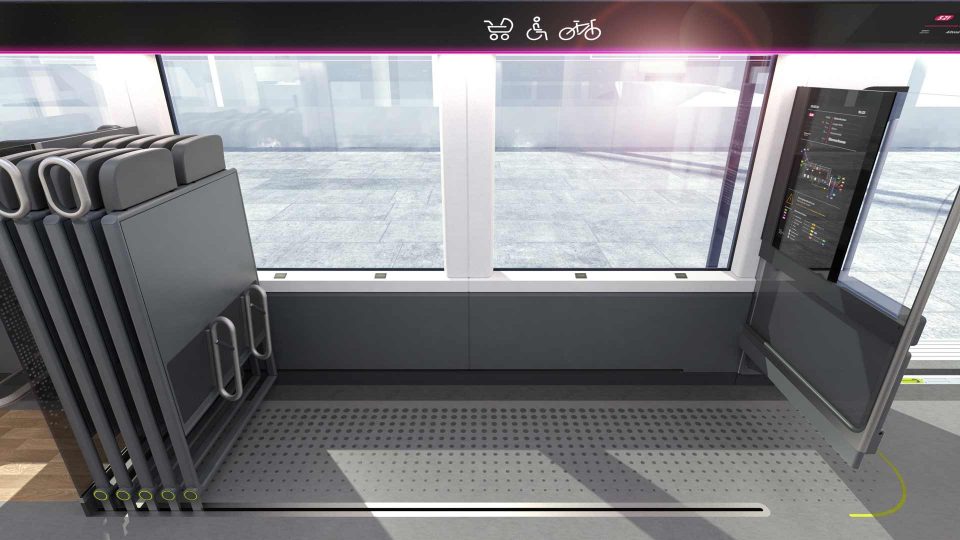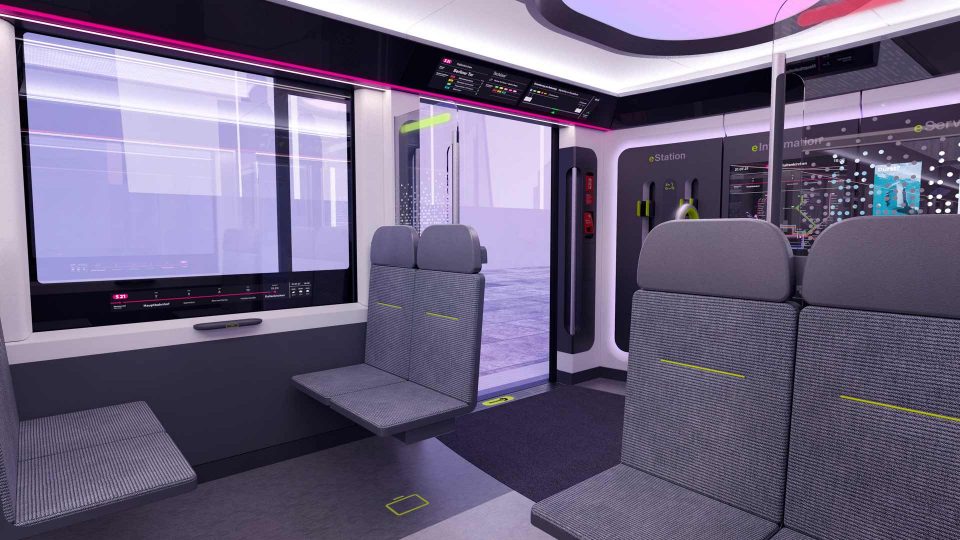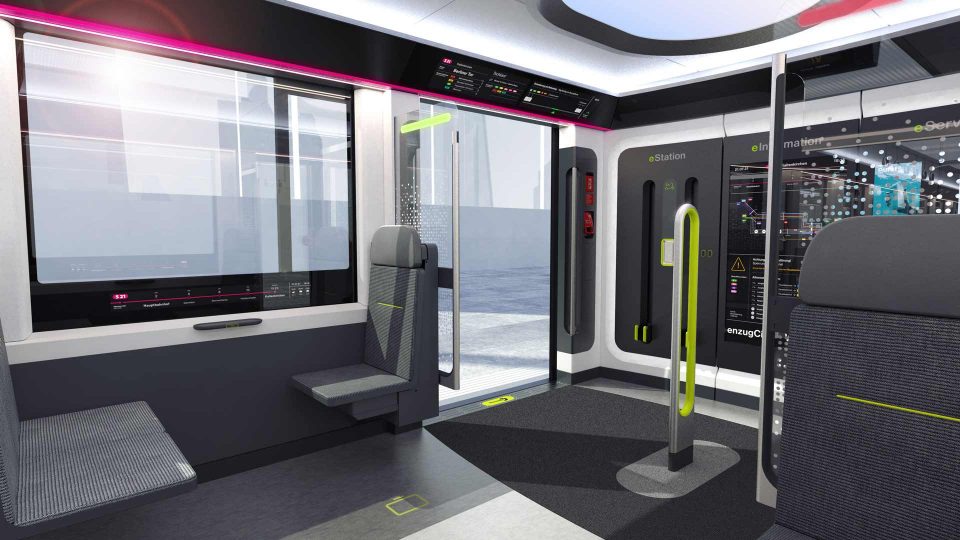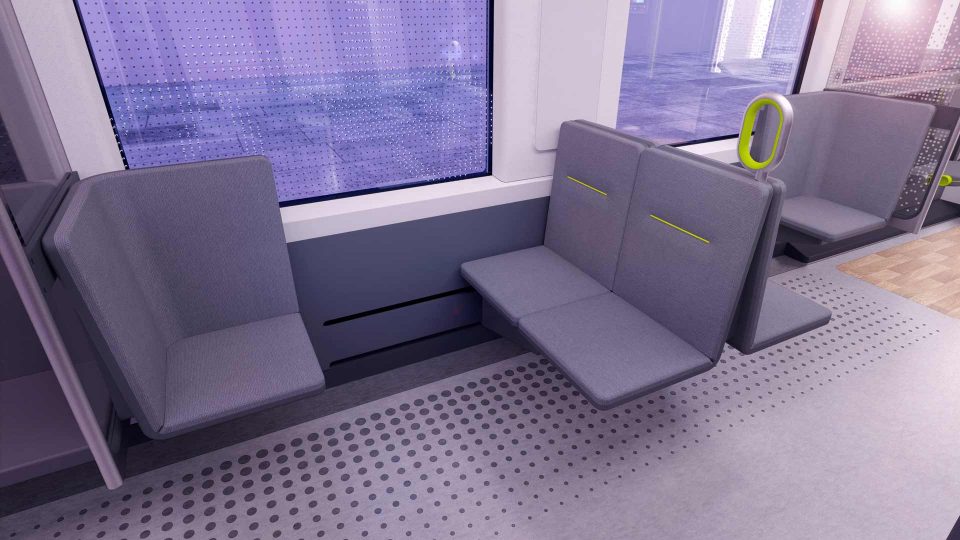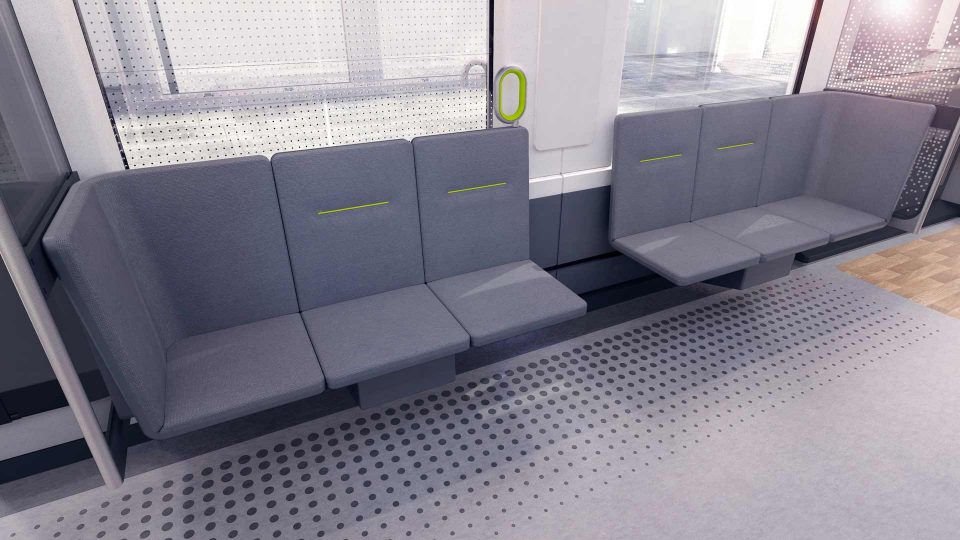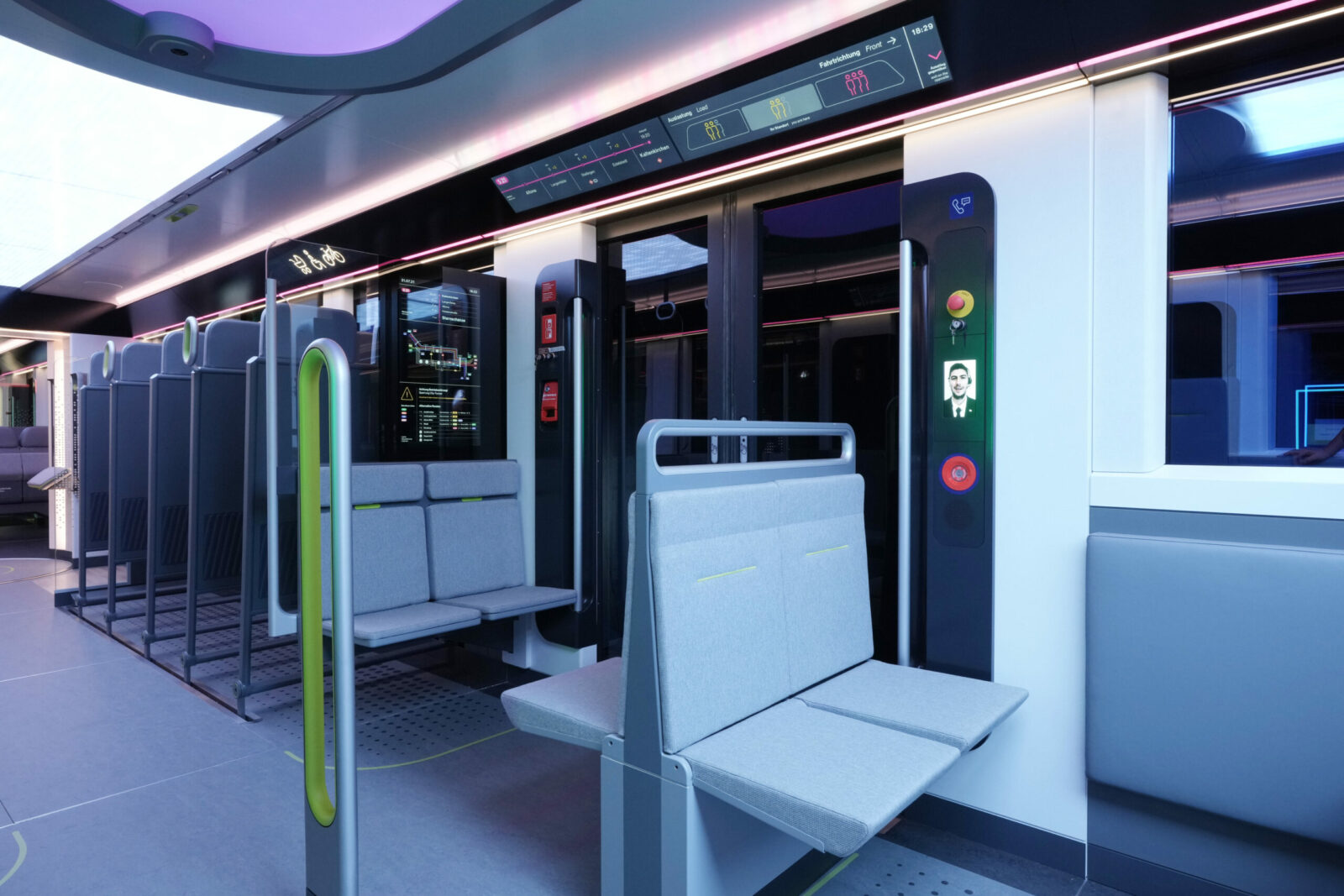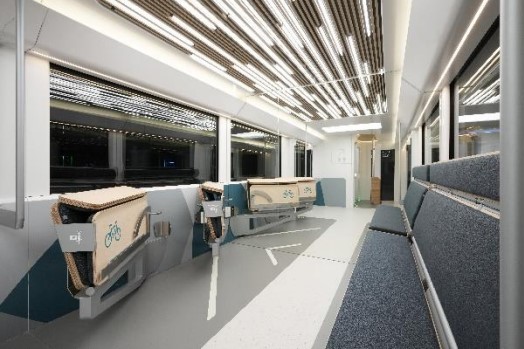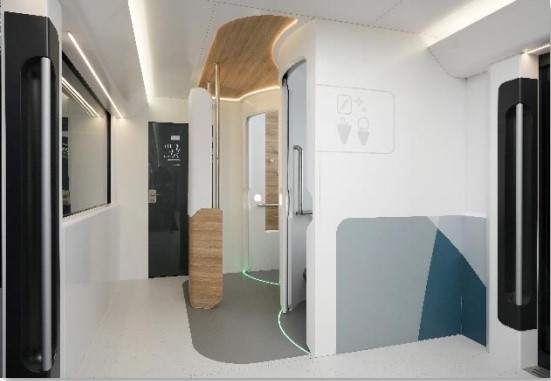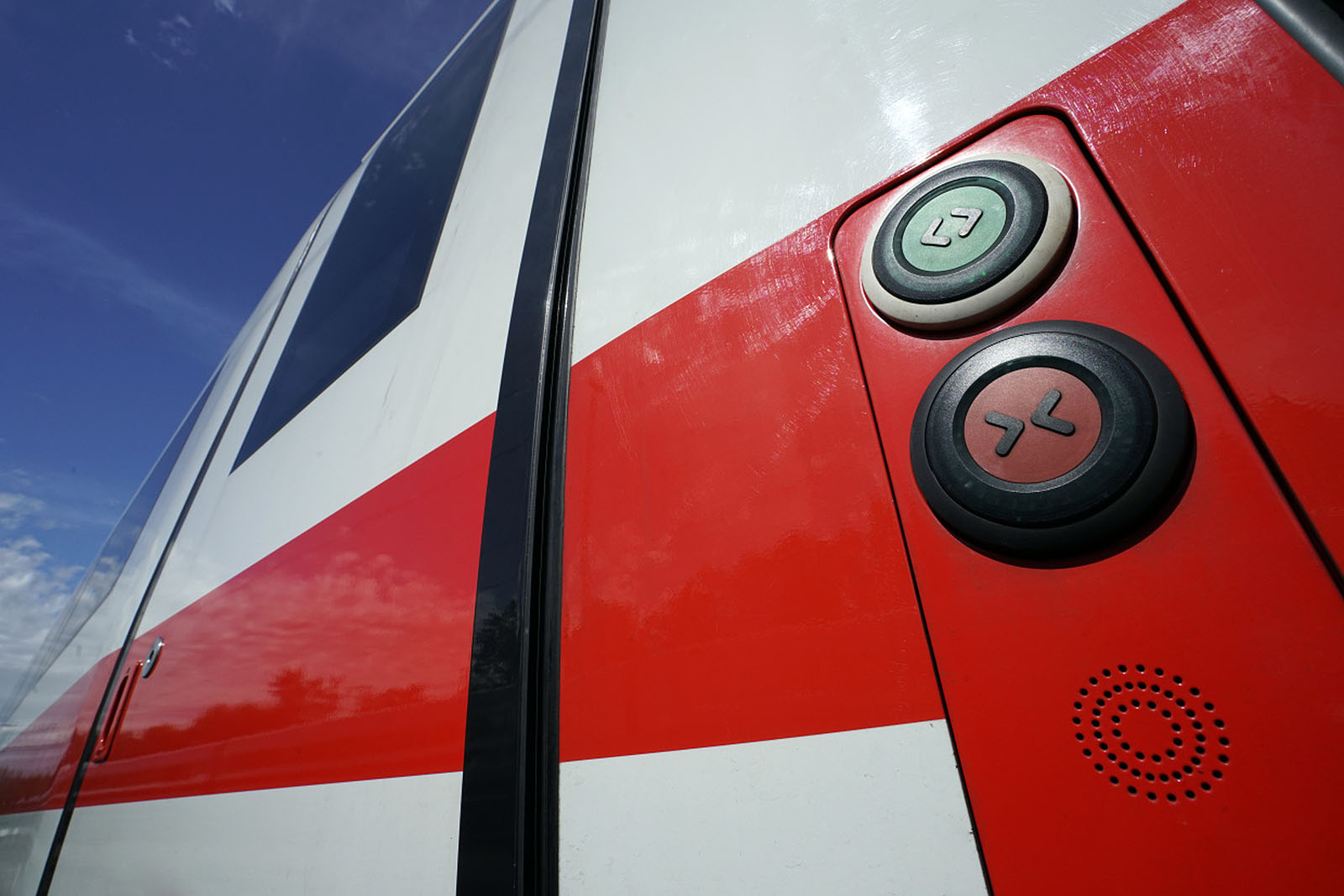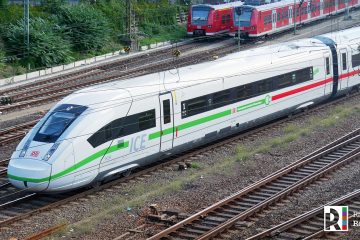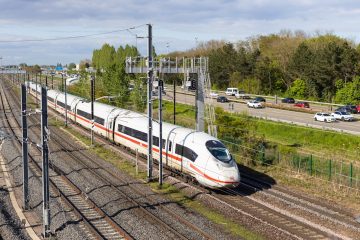In 2017, DB Regio presented the ‘IdeenzugRegio’, with multiple ideas for future regional trains. Last month, DB Regio presented a mock-up of the S-Bahn of the future, the ‘IdeenzugCity’. It showcases ideas to improve the quality, and increase capacity, of rail traffic in metropolitan areas.
On 21.07.2021, DB Regio presented a 1:1 mock-up of the S-Bahn of the future, the ‘IdeenzugCity‘ (German for ‘city train of ideas’), created by DB Regio’s Ideenzug team, German design studio Neomind, and model builder Hubl&Hubl created . Over 40 international partners supported the project, often at their own expense.
The 23,75-meter long mock-up has twelve modules and weighs 13 tonnes. The new concepts are clustered: capacity & comfort, service innovation, passenger guidance & information.
Exterior design
The IdeenzugCity has one large windshield, giving it a tram-like look. The 180-degree front destination display adapts while entering a station, moving the destination from the center of the display to the side of the platform. The LED light strip over the entire length of the train visualises the line colour of the route of the train. Alternatively, the occupancy of each passenger compartment can be shown.
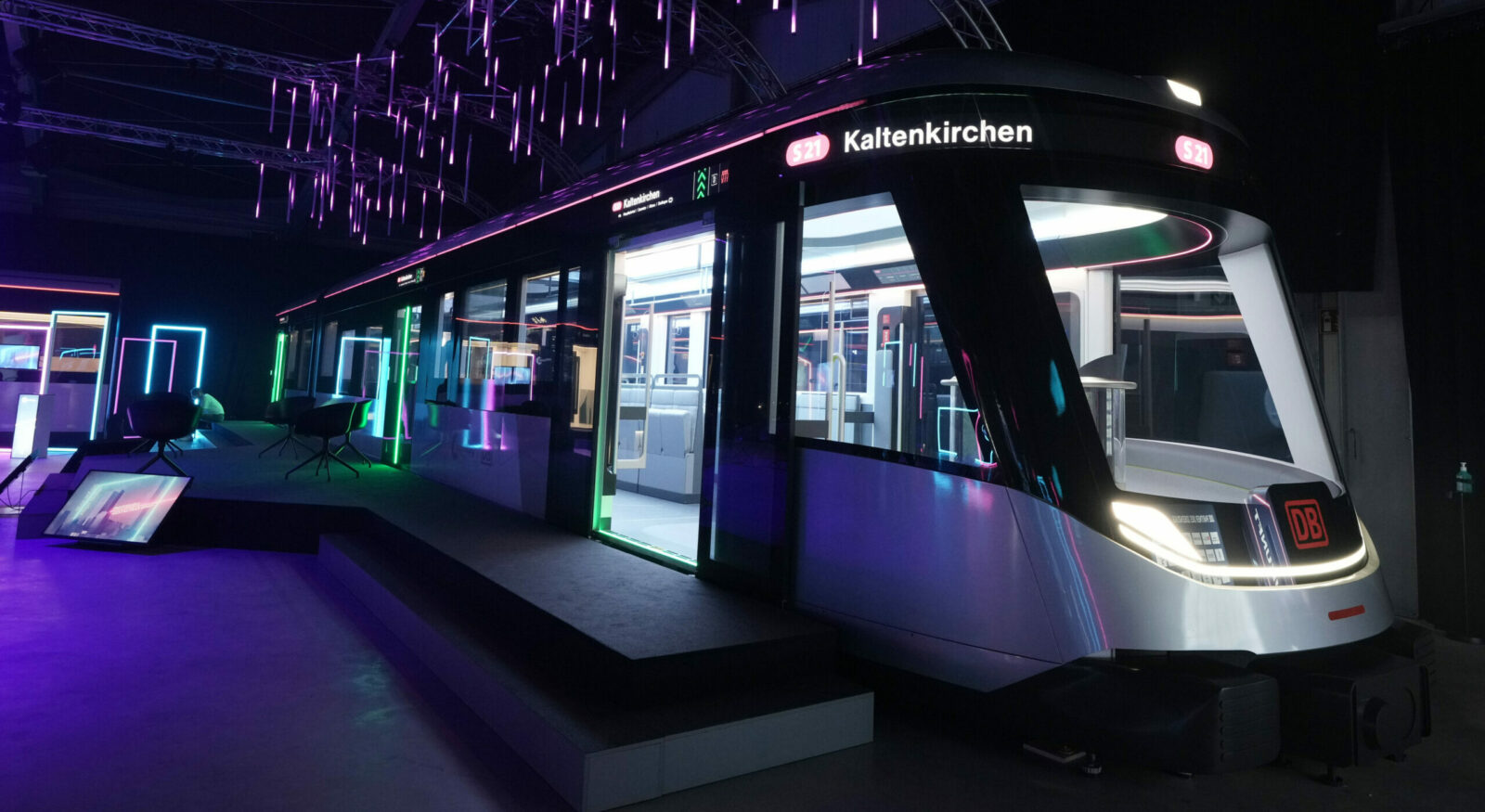
Capacity & comfort
The modules about “capacity & comfort” are the highlights of the IdeenzugCity. By automating the seats, the configuration of interior can be altered at the push of a button, increasing capacity by up to 40% and optimizing it for the specific time of day, the number of passengers, and the type of traveller. There can be extra standing places during rush hour and when traveling to major events for example, and more seats during off-peak hours.
Some smart capacity ideas:
- Standing seats (peak hours), can be moved aside to create multipurpose areas for bikes or strollers (off-peak);
- Automated retractable seats, for a lot of standing places (peak hours) or seating (off-peak);
- Automated adjustable seats, switching their direction from parallel (peak hours) to perpendicular to the travel direction (off-peak).
Service innovations
To offer travellers the possibility to work on the go, two work areas with folding tables and more privacy were incorporated. An integrated display can be used as a second screen for a laptop.
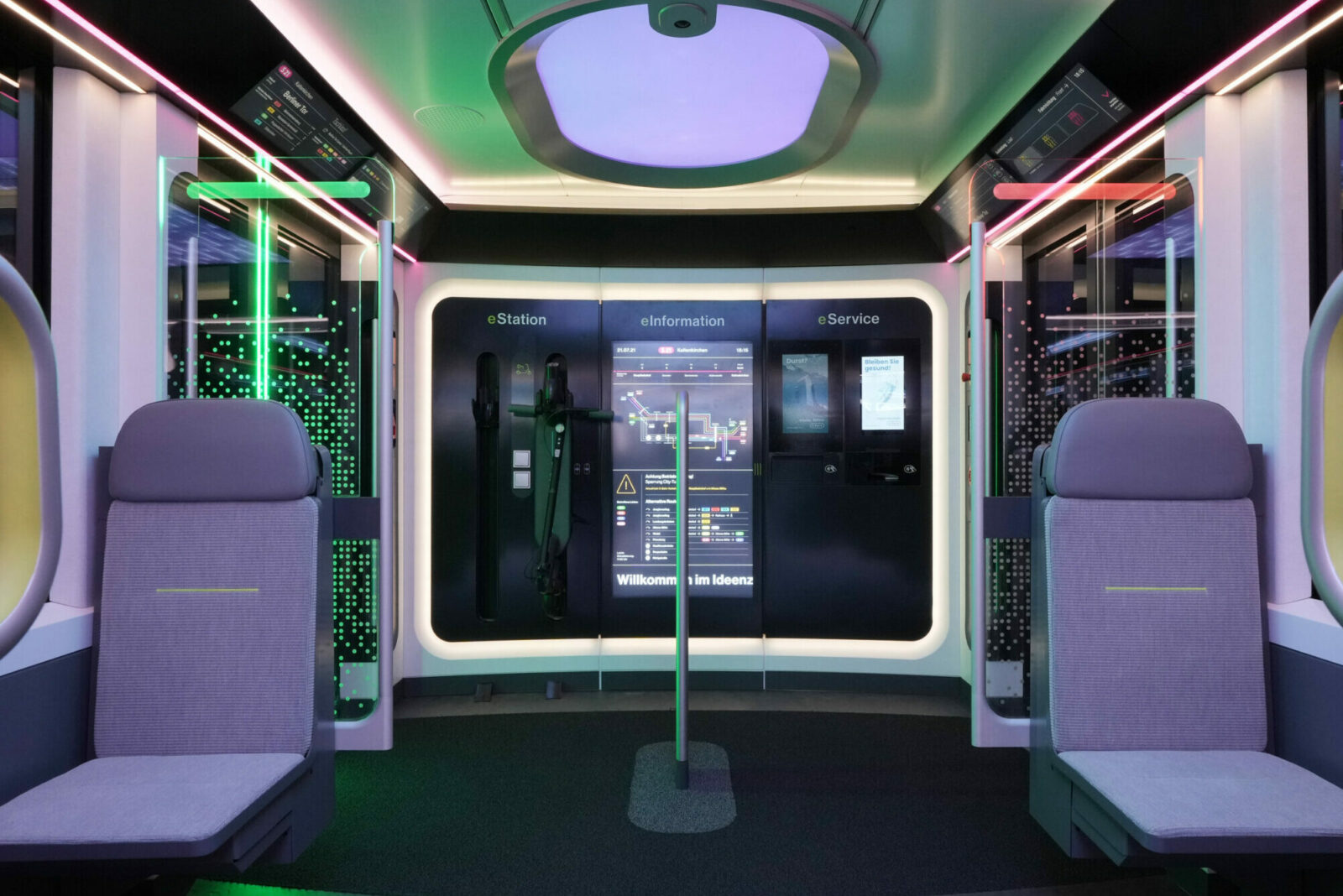
Large displays can be integrated into back of the train driver’s cab (if still available), informing people about the weather and their journey, including their current location on a digital network plan. Different vending modules, easy to exchange, can be integrated to sell products.
Passenger guidance and information
Video cameras and sensors count passengers and track their movements inside the passenger compartment. This data is used to guide passengers in real-time to free seats via (over-door) displays and effect lighting.
To avoid glare from the sun, the window panes can darken. Monitors, windows with augmented reality as well as a LED ceiling matrices enable new ways of informing and entertaining passengers.
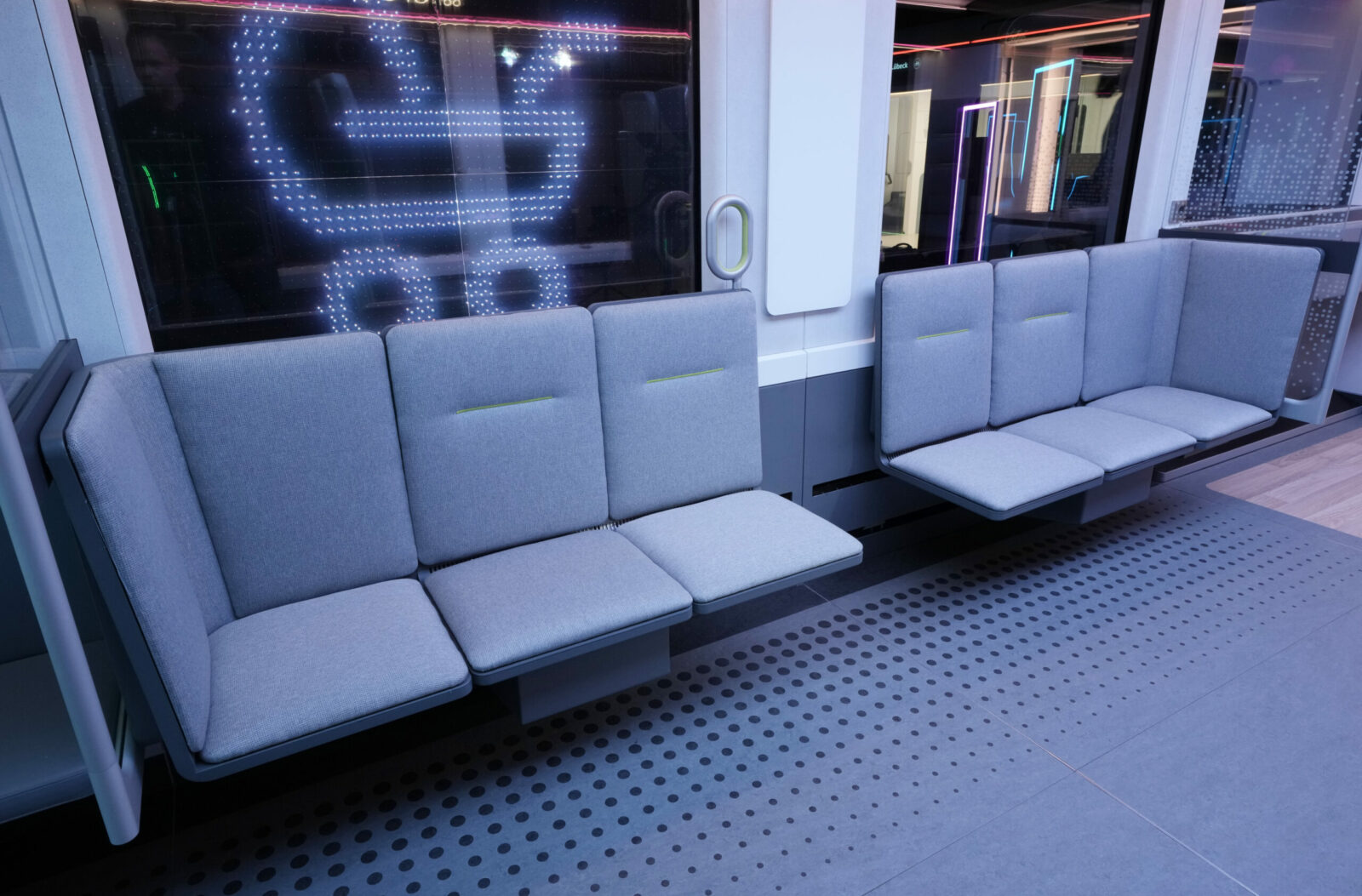
Bonus: Two additional modules for IdeenzugRegio
Besides the new IdeenzugCity-modules, two additional modules have been designed for the IdeenzugRegio: “hygiene/toilet” and “bicycle transport”.
The hygiene and toilet areas has a direct influence on passenger satisfaction. The new module offers three separate units: a toilet, a changing table, and a stand-alone sink. The module is mostly contact-free, doors or buttons do not have to be touched.
The bicycle module is about optimising seating vs bicycle space conditions. The new interior can be adapted flexibly, the fully-fledged benches can be folded depending on day or season.
Video


